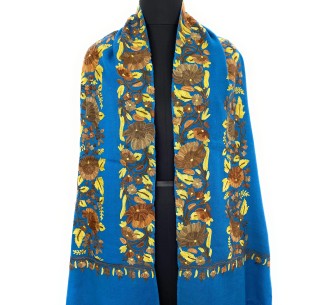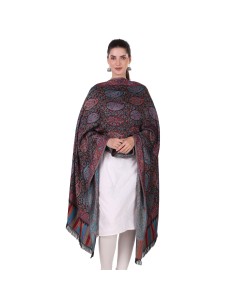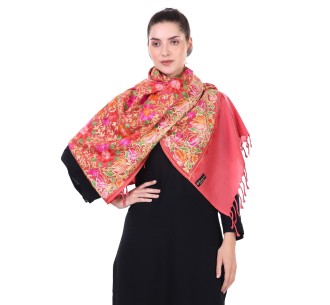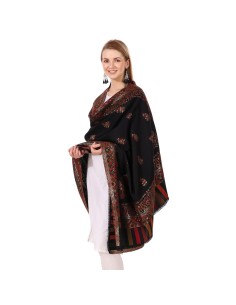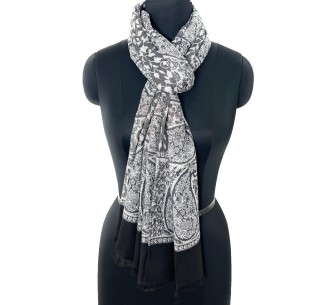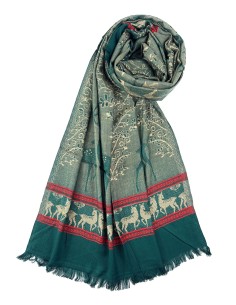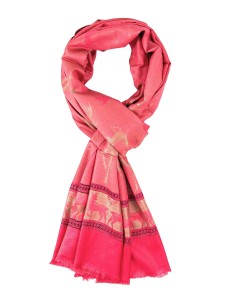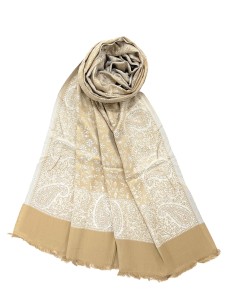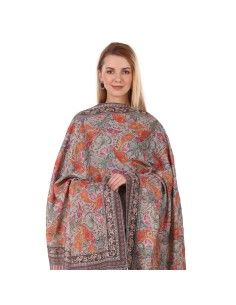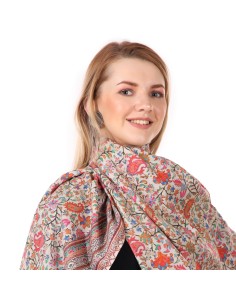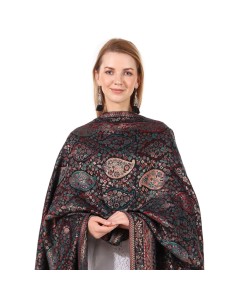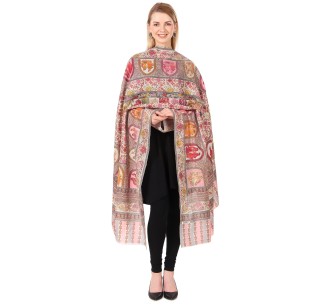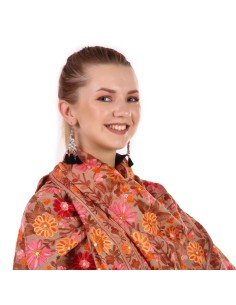- Pashmeen
- Style Guide
- 0 likes
- 58 views

Dual Tone Reversible Self Jacquard 4 Side Paisley Border Stole for Women - Black Grey
Dual Tone Reversible Self Jacquard 4 Side Paisley Border Stole for Women - Green
Dual Tone Reversible Self Jacquard 4 Side Paisley Border Stole for Women - Red White
Dual Tone Reversible Self Jacquard Deer Pattern Scarf for Women - Green
Dual Tone Reversible Self Jacquard Deer Pattern Scarf for Women - Hot Pink
Discover the eco-friendly qualities of pashminas, cashmere, and wool scarves, and learn how these sustainable fashion choices can help create a greener world. Explore their environmental benefits, production processes, and ethical considerations.

In an era of increasing environmental consciousness, sustainable fashion has emerged as a viable solution for reducing the ecological impact of the clothing industry. As consumers become more aware of the consequences of fast fashion, they are seeking alternative choices that align with their values. Pashminas, cashmere, and wool scarves have gained popularity not only for their timeless elegance but also for their contribution to a greener world. In this article, we delve into the eco-friendly qualities of these luxurious scarves, exploring their environmental benefits, production processes, and ethical considerations.
Pashminas: A Sustainable Luxury
Pashminas, known for their softness and warmth, have been revered for centuries. Originating from the Himalayan region, pashminas are made from the fine wool of the Cashmere goat. One of the primary reasons pashminas are considered sustainable is their longevity. High-quality pashminas are durable and designed to last for generations, reducing the need for frequent replacements. Moreover, the production process involves minimal chemical treatments and low water consumption, making pashminas a sustainable alternative to synthetic fabrics.
Cashmere: A Timeless Investment
Cashmere, another exquisite natural fiber, is known for its unparalleled softness and luxurious feel. The sustainable qualities of cashmere lie in its biodegradability and its ability to be recycled. Unlike synthetic materials that persist in landfills for years, cashmere decomposes naturally, reducing its environmental impact. Additionally, many cashmere manufacturers focus on responsible sourcing and sustainable farming practices, ensuring the welfare of the Cashmere goats and the communities that rely on them.
Wool Scarves: Nature's Versatile Gift
Wool, a classic and versatile fabric, has been used for centuries to create warm and comfortable clothing that withstands the test of time. Wool scarves, in particular, offer numerous eco-friendly advantages. Firstly, wool is a renewable resource, as it comes from sheep that can be shorn multiple times throughout their lives. This makes wool scarves a sustainable choice compared to synthetic alternatives that rely on non-renewable resources. Furthermore, wool is biodegradable, meaning that at the end of its life cycle, it can naturally decompose without harming the environment.
In terms of production, wool scarves often involve minimal chemical treatments, reducing the use of harmful substances that can pollute waterways and ecosystems. Additionally, the energy required to process and manufacture wool is relatively low compared to synthetic materials, contributing to a smaller carbon footprint.
Environmental Benefits of Sustainable Scarves
Choosing pashminas, cashmere, and wool scarves over fast fashion alternatives brings numerous environmental benefits. Firstly, the production of these scarves involves fewer greenhouse gas emissions compared to the mass production of synthetic materials. As natural fibers, pashminas, cashmere, and wool scarves have a lower carbon footprint throughout their life cycle.
Secondly,the natural fibers used in pashminas, cashmere, and wool scarves require less energy-intensive processes compared to the production of synthetic materials. Synthetic fibers like polyester and nylon are derived from non-renewable resources and often require large amounts of energy during the manufacturing process. On the other hand, pashminas, cashmere, and wool scarves are made from natural materials that can be sourced sustainably and processed with minimal energy inputs.
Moreover, the durability and longevity of pashminas, cashmere, and wool scarves contribute to their eco-friendliness. Fast fashion items are often designed with planned obsolescence in mind, encouraging frequent replacements. In contrast, these luxurious scarves are crafted with meticulous attention to quality, ensuring they can be cherished and worn for years, if not decades. By choosing durable and long-lasting scarves, consumers reduce the demand for fast fashion, which in turn decreases the overall production and waste generated by the fashion industry.
Ethical Considerations in Sustainable Scarf Production
Sustainable fashion not only encompasses environmental concerns but also includes ethical considerations. When it comes to pashminas, cashmere, and wool scarves, there are certain factors to be mindful of. One important aspect is the sourcing of raw materials. Ethical manufacturers prioritize responsible sourcing practices, ensuring that the animals providing the wool or cashmere are treated humanely and not subjected to cruel practices. They often work with suppliers who adhere to strict animal welfare standards and support sustainable farming practices.
In addition, ethical considerations extend to the working conditions and fair wages for the artisans and workers involved in the production of these scarves. Sustainable fashion brands often prioritize fair trade practices, ensuring that the individuals involved in the manufacturing process receive fair compensation for their work and operate in safe and healthy working conditions.
Transparency is also a key aspect of ethical production. Sustainable fashion brands are often committed to providing information about their supply chains, including the source of materials, production processes, and any certifications or standards they adhere to. This transparency allows consumers to make informed choices and support brands that align with their values.
By choosing pashminas, cashmere, and wool scarves from ethical and sustainable brands, consumers can contribute to a fairer and more equitable fashion industry.
Conclusion
As consumers increasingly prioritize sustainability and ethical considerations in their fashion choices, pashminas, cashmere, and wool scarves emerge as excellent options that contribute to a greener world. These luxurious scarves offer a range of eco-friendly qualities, including durability, biodegradability, and low carbon footprints. The production processes of pashminas, cashmere, and wool scarves often involve minimal chemical treatments and lower energy consumption compared to synthetic alternatives. Furthermore, choosing sustainable scarves supports responsible sourcing practices, animal welfare, fair trade, and transparency in the fashion industry.


